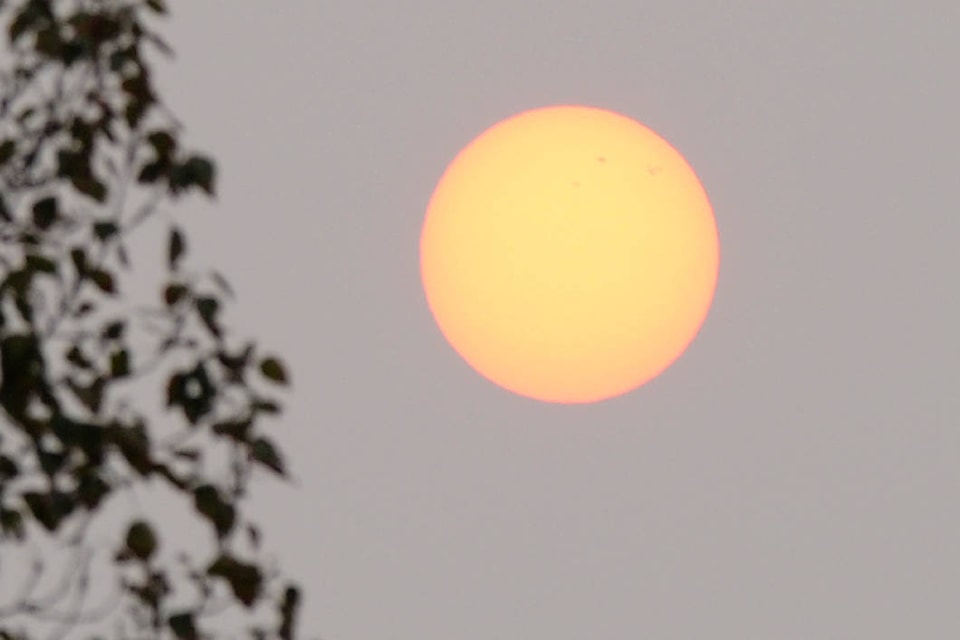The Fraser Valley’s air has never been dirtier.
The region has been subject to an “unprecedented degradation of air quality” in 2018, according to a new report from the staff of the Fraser Valley Regional District. So far, 21 air quality advisories have been issued this year, with more possibly to come, the report says. That’s more than the 19 advisories issued in 2017, which at the time, was by far the most ever recorded in a single year.
In 24 months, 40 air quality advisories had been issued.
Prior to 2017, the region had never before seen more than 10 advisories in a single year; in the two decades between 1996 and 2016, a total of 65 advisories had been issued – an average of fewer than four days each year.
RELATED: A look at B.C. wildfire smoke from space
Story continues below
Smoke from wildfires is the most obvious culprit, and the staff notes that trends suggest wildfire seasons are becoming longer and more extreme.
But the report also notes that many of the advisories were attributable to local factors pushing ozone levels beyond the threshold that triggers a health warning. In late July, for instance, particulate matter counts were low, but hot weather, intense sunshine and a prolonged dry spell caused ozone levels to spike.
Poor air brings with it an array of health risks – and not only relating to the body’s respiratory system, Coun. Patricia Ross, who is vice-chair of the Fraser Valley Regional District board, noted. Studies have found breathing poor air has a negative effect on the brain, the heart and the prevalence of diabetes.
“We really do have one of the most challenged airsheds in the world,” Ross said.
A confluence of factors make the Fraser Valley particularly susceptible to factors that pollute the skies.
Prevailing winds blowing air from Metro Vancouver and Northern Washington into the funnel-shaped Fraser Valley frequently leaves residents breathing contaminants that originate to the west and south.
Ross cited a study that found more than half of the ground-level pollution in the Fraser Valley originated in Metro Vancouver, to the west. Another quarter came from the United States.
That means that local planning processes and initiatives can only have a limited effect on the region’s air.
“It’s certainly under-appreciated by those beyond our borders sometimes,” said Ross, who was a vocal opponent of the failed SE2 power plant in Washington State and proposals to burn garbage in Metro Vancouver. Ross, who also opposed the expansion to the Kinder Morgan pipeline, also cited the effects of marine pollution.
“It seems like we’ve constantly got to remind people beyond our borders: ‘Hey, you’re sending [your pollution] this way.’”
Ross said the report also shows the importance of improving the region’s transportation system, citing pollution caused by cars stuck in traffic, saying action is needed to widen the highway and/or improve transit options.
RELATED: 2017 wildfire smoke took toll on Lower Mainland air quality: report
